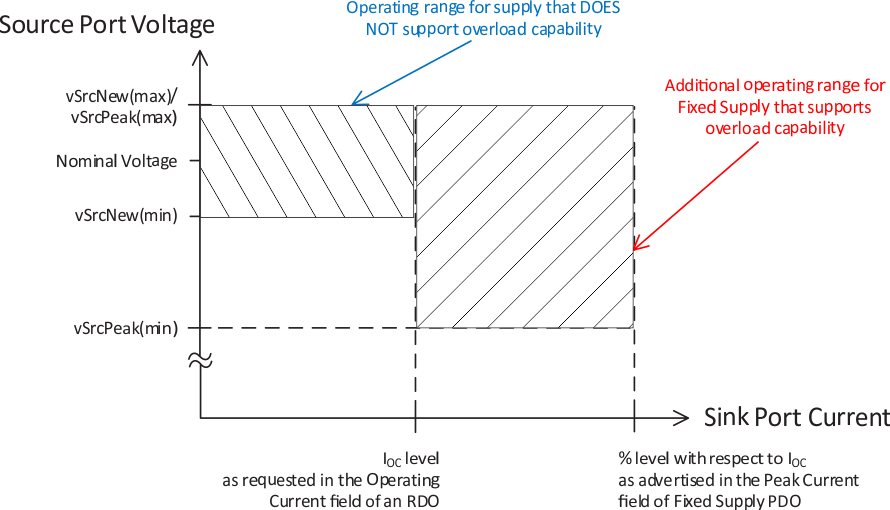SLVAFR4 February 2024 TPS25762-Q1 , TPS25763-Q1 , TPS25772-Q1
4.3 SPT.5 Over Current Test
 Figure 4-4 Source Peak Current Overload
Figure 4-4 Source Peak Current OverloadThis test item covers PD3.0 CTS 7.1.7.1 and CTS 7.1.11. Sources operating in SPR mode Shall implement over current protection to prevent damage from output current that exceeds the current handling capability of the Source. Sources attempt to send a Hard Reset message when over current protection engages followed by an Alert Message indicating an OCP event once an Explicit Contract has been established.
A Source that has the Fixed Supply PDO or EPR AVS APDO Peak Current bits set to 01b, 10b and 11b Shall be designed to support one of the overload capabilities. Sources are not required to support continuous overload operation. When overload conditions occur, the Source is allowed the range of vSrcPeak (instead of vSrcNew) relative to the nominal value. When the overload capability is exceeded, the Source is expected take whatever action is necessary to prevent electrical or thermal damage to the Source.